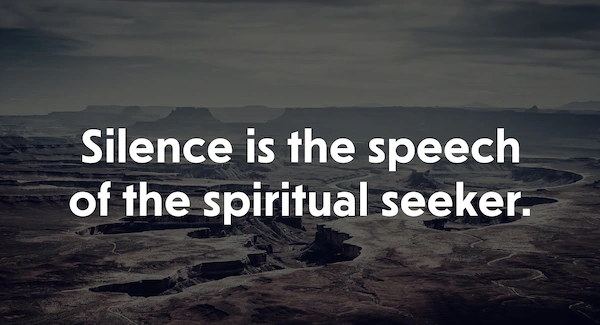
The Assault of the Modern Soundscape
We inhabit perhaps the loudest civilization in human history. The contemporary soundscape bears little resemblance to the acoustic environments that shaped our ancestors’ consciousness for millennia. From the grinding mechanical roar of industrial machinery to the perpetual digital chirping of devices demanding attention, we exist within an unprecedented auditory storm that knows no respite. The background tapestry of our lives is woven with the hum of electronics, the distant thunder of passing aircraft, the staccato rhythm of keyboards, and the near-constant drone of human voices—both real and digitally transmitted.
Consider the ordinary urban morning: an alarm disrupts sleep, followed immediately by news broadcasts or music, the whir of kitchen appliances, notifications pinging from devices, traffic sounds filtering through windows, neighbors’ activities penetrating walls, and construction equipment operating nearby. Before conscious thought has fully formed, the auditory assault has begun.
Most troubling is how the constant barrage of neighborhood dogs engaged in competitive barking matches creates irregular, unpredictable sound patterns that neurologically demand attention. Unlike consistent background noise we might adapt to, the sudden eruption of a barking dog triggers our evolutionary alert systems—what biologists call an “orienting response.” This neurological hijacking occurs repeatedly throughout our days, fragmenting consciousness and disrupting interior silence with each bark, honk, or siren.
Car sounds deserve particular scrutiny—the modern combustion engine’s roar, amplified in sports vehicles, the screech of tires, and aggressive horn use transform public spaces into stress-inducing environments. These noises don’t merely annoy; they fundamentally alter our neurological state, keeping us perpetually in low-grade fight-or-flight responses that drain our capacity for deep thought and spiritual awareness.
The problem extends beyond mere volume. It is the quality of modern noise—its artificiality, unpredictability, and meaninglessness—that proves most disruptive to our inner equilibrium. Natural sounds like rainfall or rustling leaves often restore rather than deplete our cognitive resources. But the harsh, mechanical cacophony surrounding us today bears no relationship to our evolved acoustic sensibilities. We have created a sound environment alien to human consciousness.
The Spiritual Cost of Perpetual Noise
The implications of this auditory landscape for spiritual development are profound yet largely unexamined. Traditional wisdom across contemplative traditions emphasized silence as the foundation for spiritual growth—from the desert fathers’ retreat into quiet solitude to Zen Buddhism’s silent zazen practice to the Quakers’ silent meetings. These traditions understood what neuroscience now confirms: the mind requires stillness to access its deeper dimensions.
When constantly bombarded by external stimuli, our consciousness becomes shallow, reactive, and fragmented. The incessant background noise of modern life creates a parallel mental noise—a continuous stream of fractured thoughts, emotional reactions, and cognitive processing that never fully resolves. This mental static prevents access to the deeper currents of awareness where spiritual insight arises.
The noise we passively absorb slowly rewires our neural pathways, training our brains to expect constant stimulation and weakening our capacity for sustained attention. Studies show modern attention spans have decreased dramatically alongside the increase in environmental stimuli. This neurological adaptation has serious spiritual consequences: the contemplative mind requires precisely the capacities being eroded—sustained attention, perceptual depth, and the ability to remain present with subtle internal phenomena.
Moreover, constant noise creates a form of existential drowning—the quiet voice of conscience, intuition, and spiritual prompting becomes inaudible beneath the roaring surface of auditory stimulation. Many spiritual traditions speak of discerning “the still, small voice” of divine guidance, but this metaphorical voice cannot compete with literal voices, engines, and digital alerts constantly demanding attention.
Perhaps most insidiously, noise serves as an effective barrier against confronting life’s deepest questions. The bustle and distraction of sound provide a perfect escape from uncomfortable reflections on mortality, purpose, meaning, and moral responsibility. By filling every moment with noise, we create a convenient shield against existential anxiety—but this same shield prevents authentic spiritual maturation.
The Collective Fear of Silence
Our culture’s aversion to silence runs deeper than mere habit or convenience. There exists a profound, often unconscious fear of what silence might reveal. In the absence of external noise, the mind’s internal landscape emerges with startling clarity—unresolved conflicts, suppressed emotions, existential doubts, and uncomfortable truths rise to consciousness when not drowned out by ambient sound.
This fear manifests collectively in our social spaces—restaurants pipe music continuously, retail environments broadcast constant soundtracks, waiting rooms feature televisions, and public transportation increasingly includes advertising screens with audio components. Even fitness centers, ostensibly devoted to physical well-being, assault members with pounding music that prevents any possibility of mindful exercise or bodily awareness. The message becomes clear: silence is uncomfortable, unproductive, awkward—something to be avoided at all costs.
On an individual level, this avoidance becomes apparent in personal habits. The immediate reach for headphones when walking, the television switched on for “background noise” in empty rooms, the radio playing during every car journey—these behaviors reveal a deep discomfort with unmediated experience. For many, genuine silence triggers anxiety similar to withdrawal symptoms, a telling indicator of how noise addiction reshapes neural circuitry.
The fear operates at multiple levels:
- Psychological fear: Silence confronts us with suppressed emotions and unprocessed experiences we’ve avoided through distraction.
- Existential fear: In silence, ultimate questions about meaning, purpose, and mortality become unavoidable.
- Identity fear: Without external stimulation defining our experience, we face the unsettling question of who we are beneath our reactions and distractions.
- Spiritual fear: Silence opens awareness to dimensions of reality beyond the material, challenging comfortable worldviews and demanding response.
This multi-layered aversion to silence represents perhaps the greatest obstacle to spiritual growth in contemporary society—not external persecution or intellectual opposition, but the simple inability to create the conditions where spiritual awareness can naturally unfold.
The Revolutionary Act of Cultivating Silence
Given this context, deliberately creating spaces of silence becomes a countercultural, even revolutionary act. It directly challenges the dominant paradigm of constant stimulation and consumption. Learning to embrace silence requires both practical strategies and philosophical reorientation.
Creating Sacred Acoustic Refuges
The first practical step involves establishing physical spaces protected from intrusive noise. This requires intentional design:
- Sound insulation: Investing in soundproofing materials for a meditation room or personal retreat space. Heavy curtains, weatherstripping around doors, acoustic panels, and white noise machines can create significant sound barriers.
- Urban sanctuaries: Identifying public spaces that offer relative quiet—certain libraries, gardens, museums, or places of worship that maintain silence as a core value.
- Natural retreats: Regular immersion in natural settings away from mechanical noise—forests, shorelines, mountain trails—where the ambient sounds support rather than disrupt contemplation.
- Technological boundaries: Creating clear zones and times free from electronic notifications, alerts, and media consumption.
- Community agreements: Establishing shared understandings with household members about quiet hours or designated silent spaces.
For those plagued by specific noise challenges:
- Dog barking: Address this directly through neighborhood communication, sound-masking devices specifically calibrated to block barking frequencies, or in persistent cases, working with local authorities on noise ordinance enforcement.
- Traffic noise: Position living and sleeping spaces away from major roads when possible. Consider triple-pane windows, landscaping barriers using dense shrubs, and acoustic curtains designed specifically for traffic sound.
- Mechanical noise: Identify and address appliances with excessive noise through maintenance, replacement, or isolation (placing refrigerators on sound-absorbing mats, for example).
Cultivating Inner Silence Amid External Noise
Even more challenging than creating external quiet is developing internal silence—the ability to maintain mental stillness despite environmental conditions. This capacity represents a cornerstone of spiritual maturity and requires systematic cultivation:
- Graduated exposure: Begin silence practice in controlled, quiet environments before gradually extending to more challenging acoustic settings.
- Perceptual reframing: Learn to directly experience sound as pure sensation rather than conceptual irritation. This mindfulness approach transforms relationship to unavoidable noise.
- Breath anchoring: Using conscious breathing as a center point for awareness that remains stable despite auditory fluctuations.
- Sound meditation: Paradoxically, certain practices like “deep listening” directly engage with sound while maintaining inner stillness, developing the capacity to remain centered amid stimulation.
- Contemplative resilience: Regular silence practice builds neurological pathways that support sustained attention despite distraction—a form of attention fitness training.
Most crucial is consistency—brief daily periods of intentional silence prove more transformative than occasional extended retreats. The mind requires regular experience of silence to develop the neural architecture supporting contemplative awareness.
The Profound Paradox: Finding Silence Within Noise
As practice deepens, a seeming paradox emerges—authentic inner silence becomes increasingly available even amid external noise. The advanced practitioner discovers that silence is not merely the absence of sound but a quality of consciousness that can be accessed in any environment.
This represents silence at its most profound level—not as an external condition but as an internal orientation. The busiest marketplace or loudest street corner can contain perfect silence at the level of awareness when consciousness rests in its own ground rather than attaching to auditory phenomena.
The Zen tradition captures this understanding in the koan: “What is the sound of one hand clapping?” This question points toward a silence that transcends the mere absence of sound—a foundational silence from which all experience, including sound, emerges.
This paradoxical relationship between external noise and internal silence offers unexpected freedom. While creating quiet environments remains valuable, spiritual development need not depend entirely on external conditions. The practitioner gains independence from circumstance, developing the capacity for contemplative depth even in challenging environments.
The Dance of Sound and Silence: Toward Integration
The ultimate relationship with silence isn’t one of rigid separation from noise but of dynamic integration. The spiritually mature individual moves fluidly between environments, maintaining connection to contemplative depth while fully engaging with the world’s inherent sounds.
This integration manifests in several dimensions:
- Discernment of sound: Developing perceptual clarity that distinguishes between enriching and depleting sounds, consciously choosing auditory environments when possible.
- Rhythmic alternation: Creating a natural cadence between periods of external silence and engagement with sound—a breathing pattern of retreat and participation.
- Attentional sovereignty: Maintaining choice about where attention rests regardless of environmental conditions—the capacity to attend deeply to conversation when appropriate while returning to silence when needed.
- Sound appreciation: Paradoxically, periods of silence enhance the ability to truly hear when listening is called for—music becomes more profound, conversation more meaningful, natural sounds more vibrant.
The relationship between silence and sound thus becomes complementary rather than oppositional. Each enhances the other when experienced with awareness—silence providing the ground from which meaningful sound emerges, while sound creates the contrast through which silence is appreciated.
Beyond Personal Practice: The Politics of Silence
The quest for silence extends beyond individual practice into collective concerns. The increasing privatization and commercialization of quiet represents a troubling development—access to silence increasingly correlates with economic privilege. Those with resources can purchase homes in quiet neighborhoods, afford sound insulation, or escape to private retreats, while those without such means remain subjected to the most intensive noise pollution.
This inequity demands attention. Silence should be understood as a commons—a shared resource necessary for cognitive and spiritual well-being. Public policy should protect quiet spaces, enforce noise ordinances, and design urban environments with acoustic health in mind. The right to periods of silence represents an overlooked aspect of environmental justice.
Similarly, religious and contemplative communities must reclaim their historical role as guardians of silence. Many spiritual institutions have compromised their commitment to providing silent sanctuary, incorporating entertainment elements and constant activity at the expense of contemplative space. These communities have a responsibility to maintain physically accessible environments where silence is honored and protected.
Conclusion: Silence as Revolutionary Presence
In a culture where constant noise serves commercial interests by maintaining consumers in states of distraction and reactivity, cultivating silence represents a profound act of resistance. By stepping outside the stream of continuous stimulation, we reclaim attention and develop the capacity for independent thought and spiritual discernment.
More than just a spiritual technique, silence offers a different way of being—one characterized by depth rather than reactivity, wisdom rather than mere information, and presence rather than distraction. The capacity to enter silence represents freedom from the dominant paradigm of noise that colonizes consciousness for profit and control.
The path begins with simple practices—five minutes of silent sitting each morning, a walk without headphones, a meal eaten without background sound. These small experiments gradually reveal what mystics across traditions have discovered: silence is not empty but full, not absence but presence, not deprivation but nourishment.
In the spaces between sounds, in the gaps between thoughts, another dimension of experience becomes accessible—one that provides orientation, meaning, and depth to human existence. This dimension remains available even in our noisy world, waiting just beneath the surface of our distraction, accessible through the simple yet revolutionary act of entering silence.
ARE YOU HYPERSENSITIVE TO NOISE?
The world is a noisy place, have you ever noticed that? Cars speeding everywhere at all times, dogs constantly barking, airplanes roaring through the sky, and so much more. For some particularly sensitive souls, all this noise can become overwhelming. So, let’s find out if that’s the case for you.
Read the following sentences and choose the ones you agree with and find most meaningful.
Count the number of checked boxes and read the corresponding profile.
0: You are insensitive to noise
1-2: You are little sensitive to noise
3-4: You are very sensitive to noise
5-6: You are hypersensitive to noise
Further details on noise sensitivity





